Helvar TS300 light dimmer is designed to dim incandescent light bulbs that are powered from 220-230V 50Hz AC power source. It is designed to be installed to wall in place of light switch. This is an old device that might not have been sold for ages. Once this type of dimmer was quite common on Finland.
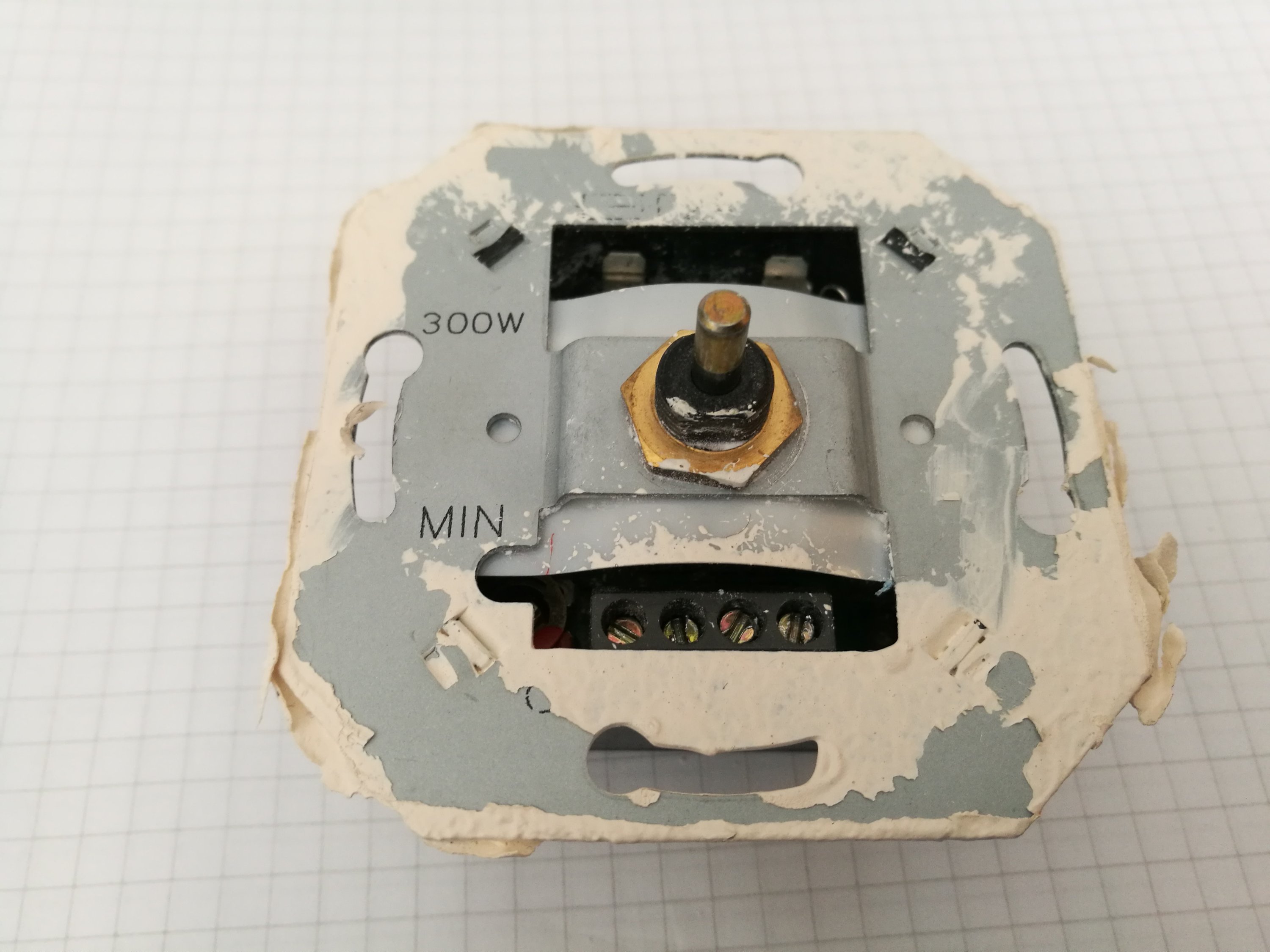
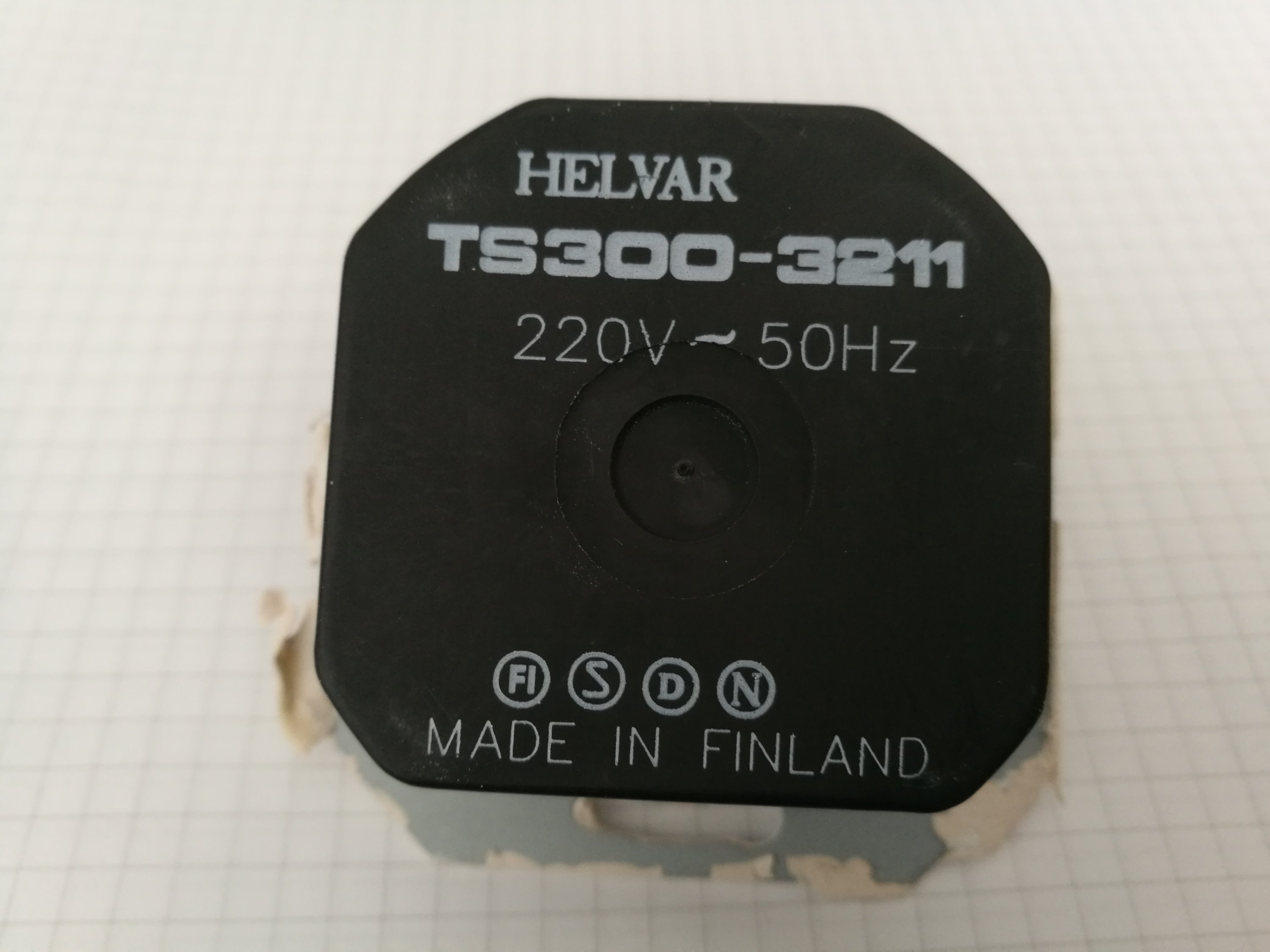
What is inside
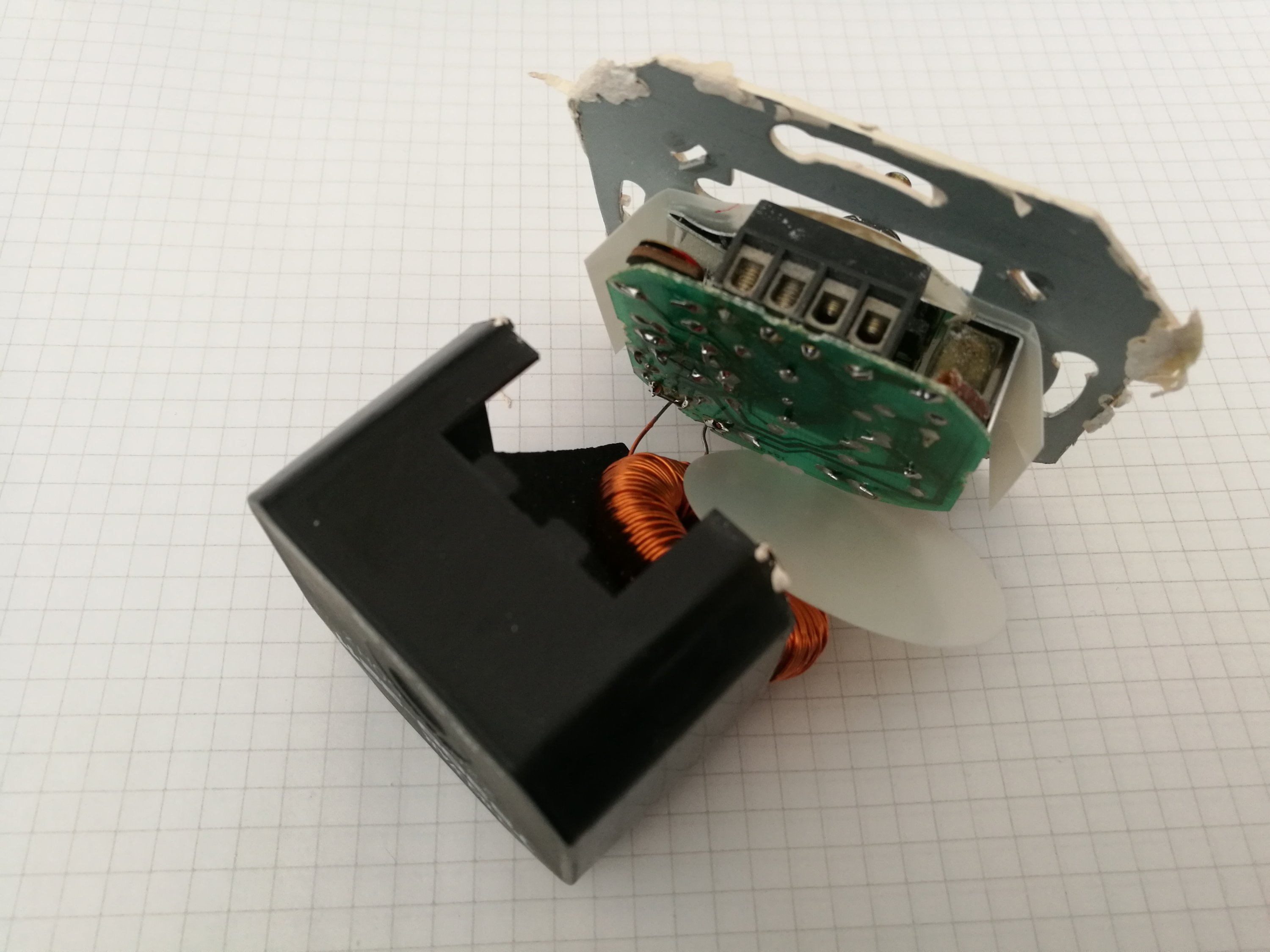
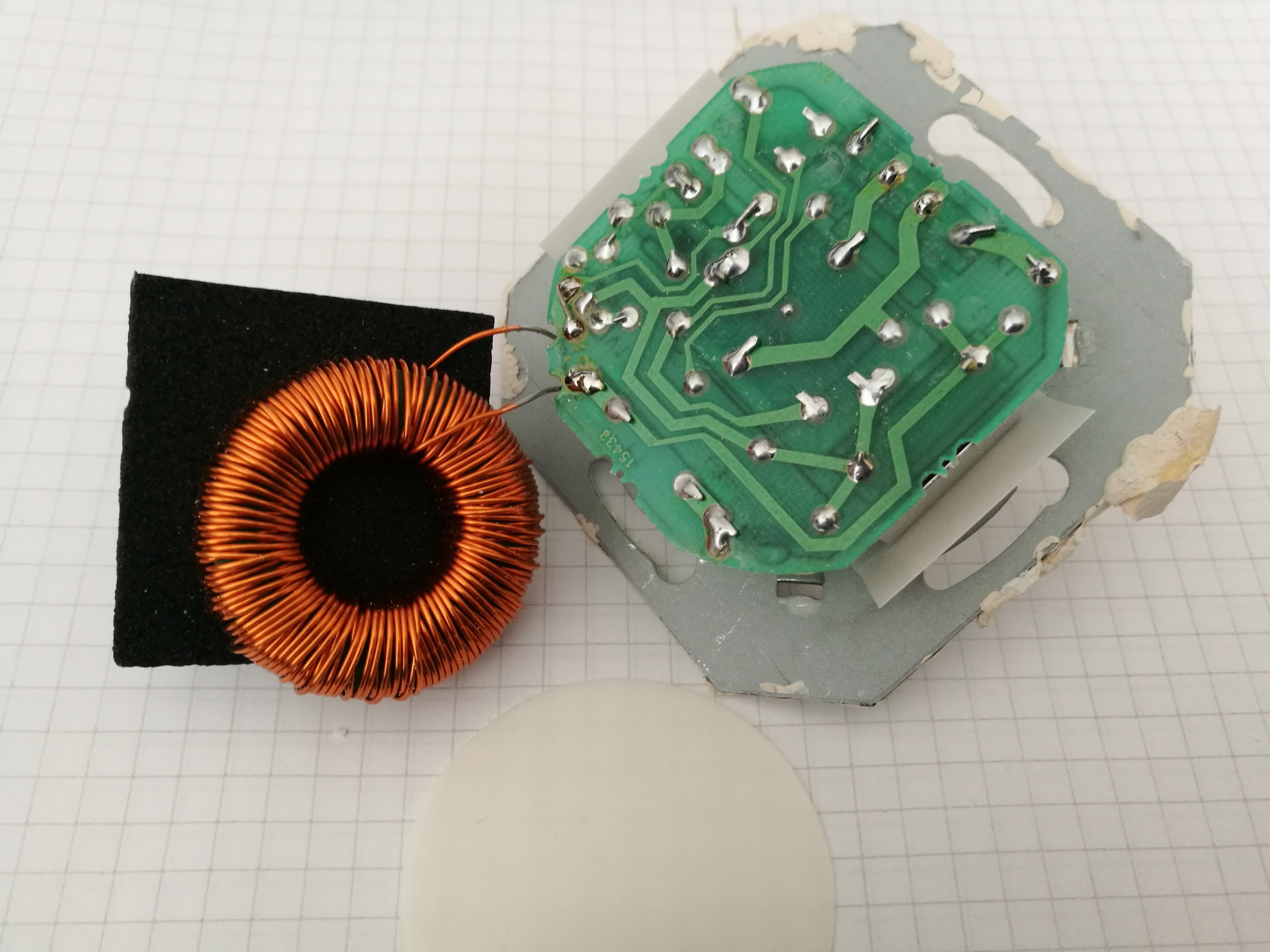
Closeup
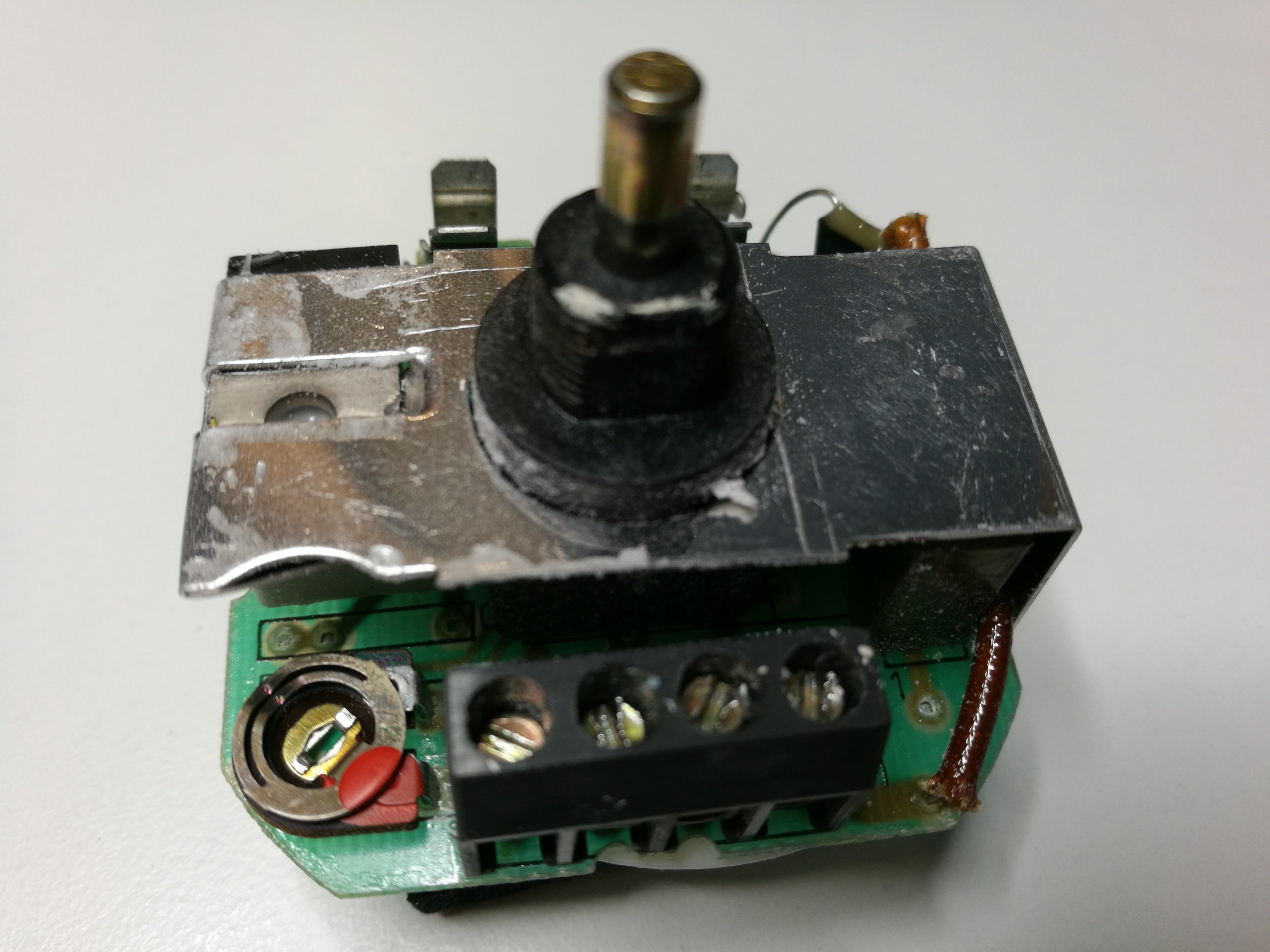
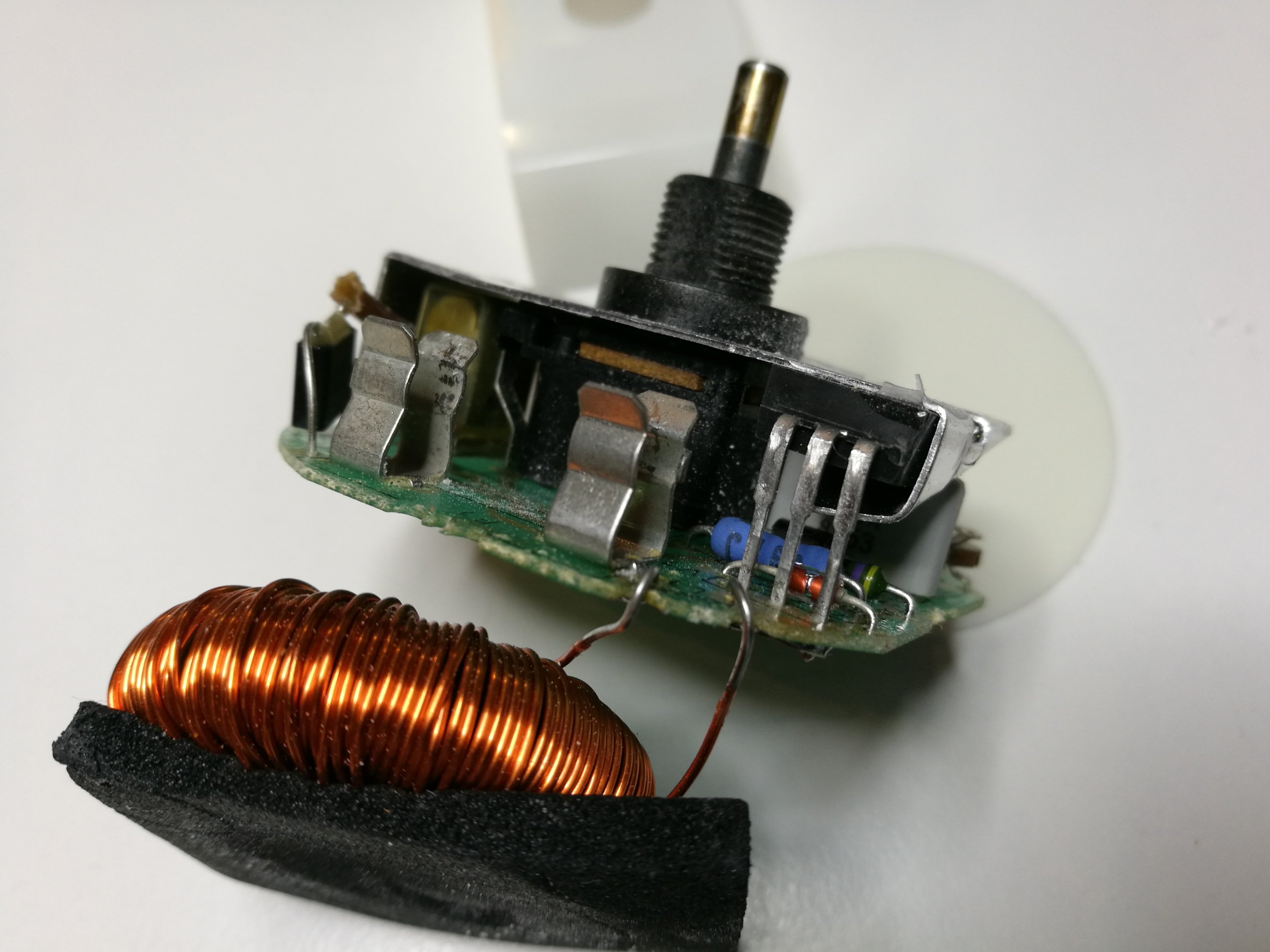
This dimmer seems to have a thermal fuse to cut out power if the device gets too hot. The first picture shows the technical data available and the second picture shows the normal position this component is installed. It looks like this thermal fuse reacts if the internal temperature inside the dimmer case exceeds 115 degrees Celsius (239 Fahrenheit). It is a sensible safety device to have in addition to the fuse.
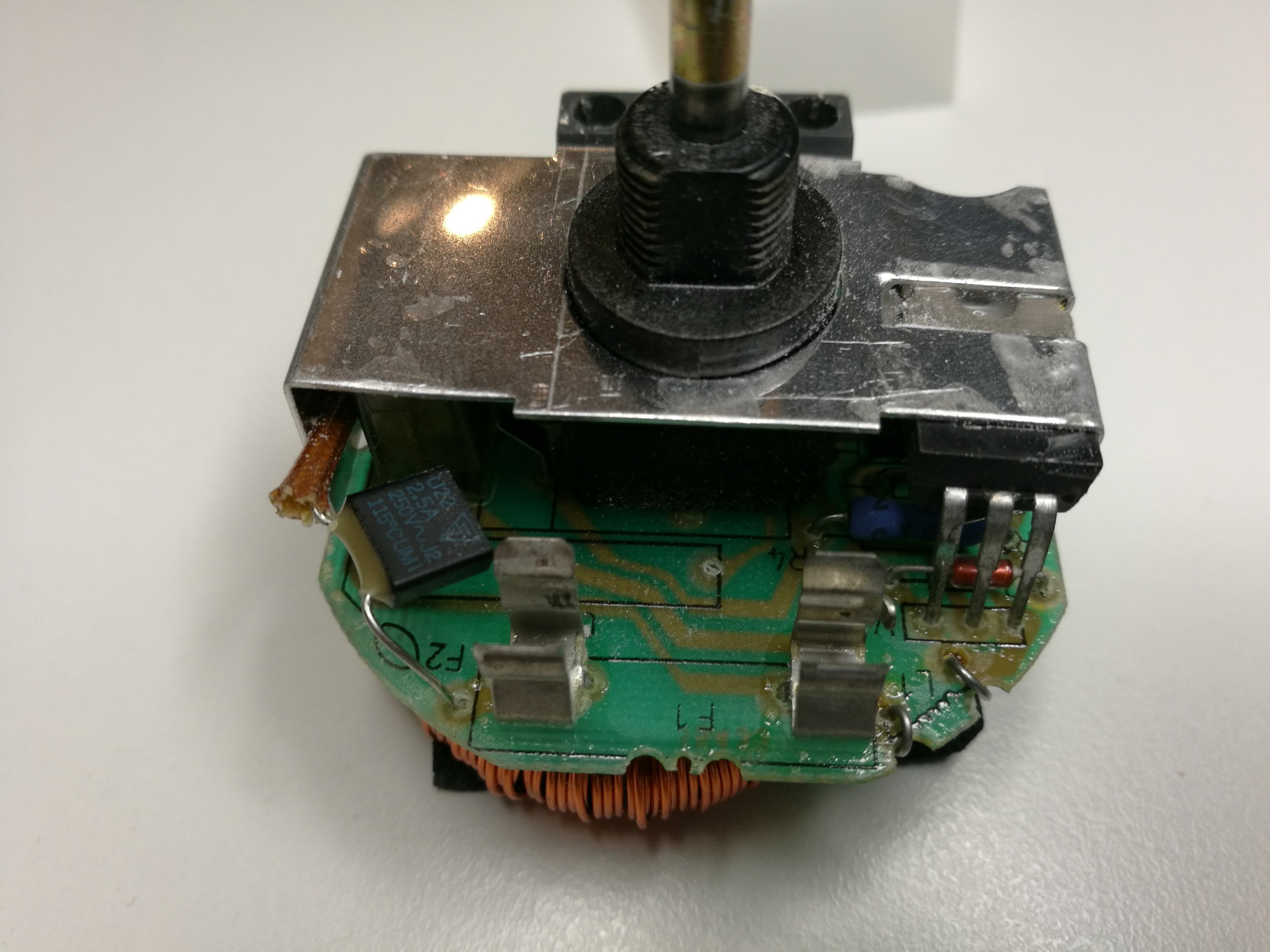
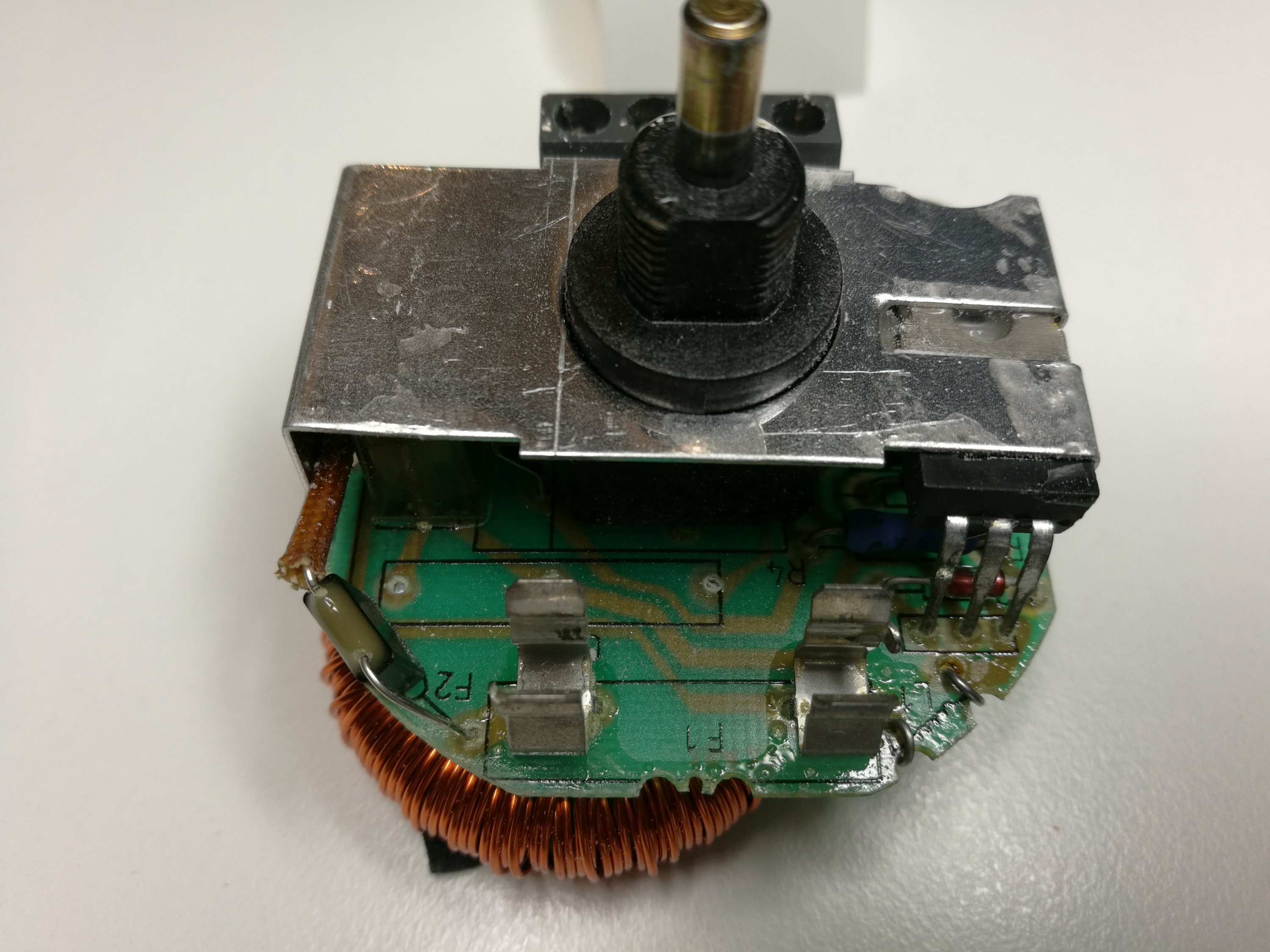
The circuit looks pretty typical for phase controlled triac based light dimmer. I did not trace all the circuit details, bit the main parts look pretty normal. It looks like this dimmer design is quite close to this other light dimmer circuit designed by the same Finnish company that I have documented in my Light dimmer circuits document.
The main difference are some component values and the fact that this smaller power dimmer has also thermal fuse in series with the mains fuse for extra protection.

25 Comments
Tomi Engdahl says:
Cheap eBay dimmer module vs compliant dimmer. (Schematics)
https://www.youtube.com/watch?v=w71Qr1ygB_Y
A look at two dimmer modules. One is a really cheap 1 $/£ eBay module and one is a better quality one as sold in the UK for home use. The main differences are in the component ratings and suppression of electrical noise.
Tomi Engdahl says:
Old Light Dimmer Failure and Teardown
https://www.youtube.com/watch?v=9xN34G8pso0
I had to replace an old dimmer switch for one of our lights. The knob just turns and turns, so I though I’d tear it down and see what went wrong with it.
Tomi Engdahl says:
Dimmer repair with cheap triac from China
https://www.youtube.com/watch?v=jolFU5v9IHs
Trying repair with chinese component.
Tomi Engdahl says:
DIY light Dimmer for video 1000 Watt ( WITH EPIC FAIL! )
https://www.youtube.com/watch?v=kgBkG-1LVtQ
Tomi Engdahl says:
Plug In Dimmer Adaptors, 300 watts
https://www.youtube.com/watch?v=CLTCD0qaahg
A look inside a dimmer plug adaptor for use with portable lighting such as table lamps.
Tomi Engdahl says:
Dimmers and Lamps – LED, Incandescent, CFL
https://www.youtube.com/watch?v=qoQ7wpVHr8I
The plug in 300W dimmer with various different lamps. Plus another dimmer, minimum load requirements and power consumption of various LED lamps.
Tomi Engdahl says:
https://www.electronicdesign.com/analog/enlightening-dimmer-switch-teardown?NL=ED-003&Issue=ED-003_20191003_ED-003_231&sfvc4enews=42&cl=article_1_b&utm_rid=CPG05000002750211&utm_campaign=28827&utm_medium=email&elq2=d759d3bf547940b1ae662d98b9fc28cb&oly_enc_id=0452E0081834E9U
Tomi Engdahl says:
https://www.ceilingfanchoice.com/can-dimmer-switches-used-ceiling-fans/
Tomi Engdahl says:
How to make a 3,500 watts light dimmer/speed controller (tagalog)
https://m.youtube.com/watch?feature=youtu.be&v=gkyDVo77M_4
Tomi Engdahl says:
Two wire light dimmers (those you can wire in place of any light switch with live in and output wires) are designed to work with resistive loads, and their usability is pretty limited to other kind of loads.
Three wire (live, neutral and out) light dimmers can generally accept more load type (like transformers, motors, some electronic transformers/psu etc..) – but what they can take depends on dimmer design.
Tomi Engdahl says:
https://ethcircuits.com/high-wattage-dimmer-switch-circuit/
Tomi Engdahl says:
https://www.electroschematics.com/rotative-speed-regulator-borer-driller-controller/
Tomi Engdahl says:
Tom’s Circuits – Power Supply Filter Design for Printed Circuit Boards
https://www.tempoautomation.com/toms-circuits/power-supply-filter-design-for-pcb/
Tomi Engdahl says:
DIMMER FOR ELECTRONIC TRANSFORMERS K8068
https://www.velleman.eu/products/view?id=354980
For use with K8006 bus system.
Features
‘PLUG-IN’ module for use with our home modular light system K8006
suitable for incandescent lamps, mains voltage halogen lighting and low voltage halogen lighting in combination with an electronic transformer (Velleman transformer types: HET60N (60W), HET105N (105W), HET150N (150W))
inductor- and filter free, phase control technology with coolMOS™ FET-transistor
a brief push toggles on/off, while continued pushing engages dimming action
‘soft-start’ feature to make lamps last as long as possible
non volatile memory for last set light intensity
interference suppressor for reduced EMI, according to EN55015
LED status and error indication
https://www.velleman.eu/downloads/0/illustrated/illustrated_assembly_manual_k8068.pdf
Tomi Engdahl says:
Cheap eBay dimmer module vs compliant dimmer. (Schematics)
https://www.youtube.com/watch?v=w71Qr1ygB_Y
A look at two dimmer modules. One is a really cheap 1 $/£ eBay module and one is a better quality one as sold in the UK for home use. The main differences are in the component ratings and suppression of electrical noise.
I did some more testing of the unusual potentiometer and the resistor section bridging to the middle pin is the fixed 5K resistance that seems to be part of a filtering circuit. The large conductive area is a deliberate dead zone where the knob activates the switch as you turn the dimmer on, and then it gradually decreases in resistance to the point where the rotation is limited at about 29K. Definitely custom-made for the dimmer application.
The inductor will allow low frequency current to flow without much impedance, but will block very sharp current transitions at the switching point.
The most common component to fail in dimmers is the triac, which usually goes short circuit, jamming the load on all the time.
The triac in the cheap dimmer is a PH600E / BT134 rated at 4A if fitted with a heatsink.
The triac in the more expensive suppressed dimmer is a BTA06-600C rated at 6A if fitted with a heatsink.
Tomi Engdahl says:
https://www.tindie.com/products/bugrovs2012/pwm-16a-3500w-triac-leading-edge-dimmer-50hz-60hz/?utm_source=hackaday&utm_medium=link&utm_campaign=fromstore
Tomi Engdahl says:
Inside a cheap eBay fan controller (with schematic)
https://www.youtube.com/watch?v=Y4xtHcls-_w
With the current heatwave it seems a good time to take a look inside a fan controller.
As is very predictable with grey imports, it is very basic and lacks any electrical noise suppression. The triac also lacks a basic snubber network, which is usually desirable with inductive loads. Such a simple circuit may have stability issues with some inductive loads.
The spare component positions could have been intended for a couple of things. A crude locator with neon and resistor for finding the controller in the dark, or a snubber network.
If they were intended for a snubber network then it’s possible that it was left off because it takes very little current to make a fan rotate, and it may have leaked enough to keep a new fan turning slowly. If it had been on the other side of the switch it would have been less of an issue.
Tomi Engdahl says:
eBay mains voltage touch dimmer – with schematic
https://www.youtube.com/watch?v=awq_ZpOIDtU
Whether you should actually use a generic Chinese touch switch is debatable. They don’t seem to fully understand electrical isolation much. A version sold by a prominent local supplier is more likely to be built to a safer standard. This module came with four wire nuts, which are rarely used in the UK.
The bulk of the work on the PCB is being done by a dedicated chip that is not the typical microcontroller. It has dedicated circuitry including an amplifier and filter for the touch input and timing for the triac driver. The use of a capacitor in series with the triac gate is to keep the power supply simpler, as it results in a short trigger pulse of reasonable current.
The data sheet for the chip has extra layers of safety on the touch input, both for the user and the chip. The extra components have been omitted in this design. The timing resistor is an odd value. Possibly a “safe” value for both 50 and 60Hz that ensures the triac trigger points are well within each half sinewave.
The triac is very small. Its rating is a surprisingly high 600mA which suggests a typical lamp rating of 60W or much lower with LED lamps due to the high inrush current associated with their circuitry. The most common failure with dimmer modules like this is the triac going short circuit when a lamp fails with a pulse of high current.
Tomi Engdahl says:
Inside a “4kW” ebay power controller with schematic.
https://www.youtube.com/watch?v=_4PwYm_7HKg
At first glance this phase angle power controller has a strong case resemblance to the common 12V chassis power supplies. But this is a beefy triac based mains power controller for things like lamps, heaters or some motors.
It has a few notable features:-
Nice case, beefy triac (one of the biggest of its type if it’s original), extra circuitry to give greater stability and output symmetry at lower levels and a bit of effort to ensure that tracks are robust enough to handle fault conditions.
It does have two slight issues. A glass fuse instead of a ceramic one and a seemingly excessive resistor value in the snubber network. 4700 ohms as opposed tot he more common 100 or even 47 ohms.
Tomi Engdahl says:
http://www.hobby-circuits.com/circuits/led-and-light/light-dimmer/602/120-vac-lamp-dimmer
Tomi Engdahl says:
http://techlib.com/electronics/power_control.htm
Tomi Engdahl says:
http://www.next.gr/circuits/Light-dimmer-circuit-l43707.html
Tomi Engdahl says:
https://sound-au.com/lamps/dimmers.html
Tomi Engdahl says:
https://hackaday.com/2024/02/03/why-not-try-a-diac/
Tomi Engdahl says:
https://avdweb.nl/tech-tips/electronics/four-quadrants-mosfet-graph